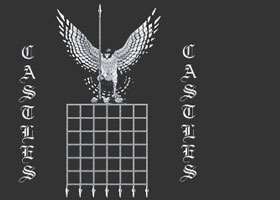 |
Leeds Castle |
| Leeds Castle | |||
| Once Leeds Castle had been built built fresh supplies, provisions and reinforcements prevented the castle occupants from being starved into submission during siege warfare. The decline of the feudal system saw castles built as fortified strongholds were no longer owned by feudal lords (this was seen as a risk to the monarchy). At this point in history King Henry VIII converted the castle into a Royal palace. |
Leeds CastleLeeds Castle is situated on the River Len where it was built by built on two adjacent islands. The name Leeds originates from the name of a chief minister of King Ethelbert IV ( 856-860) called Ledian ( it is not associated with the city of Leeds! ) Leeds Castle
Interesting facts and Information about Leeds Castle
The Earls and owners of Leeds Castle passed through several great dynasties. The medieval castle was held by members of several families - the St Legers, the Culpepers and the Fairfaxes and the Wykeham Martins. It was purchased in 1926 by the Hon Mrs Wilson Filmer, Lady Baillie, who was an Anglo-American heiress. After her death, the castle was handed over to the Leeds Castle Foundation. Description of the Edwardian Leeds castle The Gloriette at Leeds castle (the Ladys Castle) and the Queens of England
|
The History of Leeds castle Interesting facts and Information about the three islands of Leeds Castle
The Purpose of the Leeds Castle
Leeds Castle was first built as a Donjon fortress, successive lines of fortification were added over hundreds of years and several different reigns. The castle was converted from a fortress stronghold to a Royal palace by King Henry VIII. The Main Events in the History of Leeds Castle |
Leeds Castle | |||
Most Famous English CastlesTower of London |
| © March 2018 SiteSeen Ltd. | Cookies Policy | Privacy Statement | By Linda Alchin | ||
